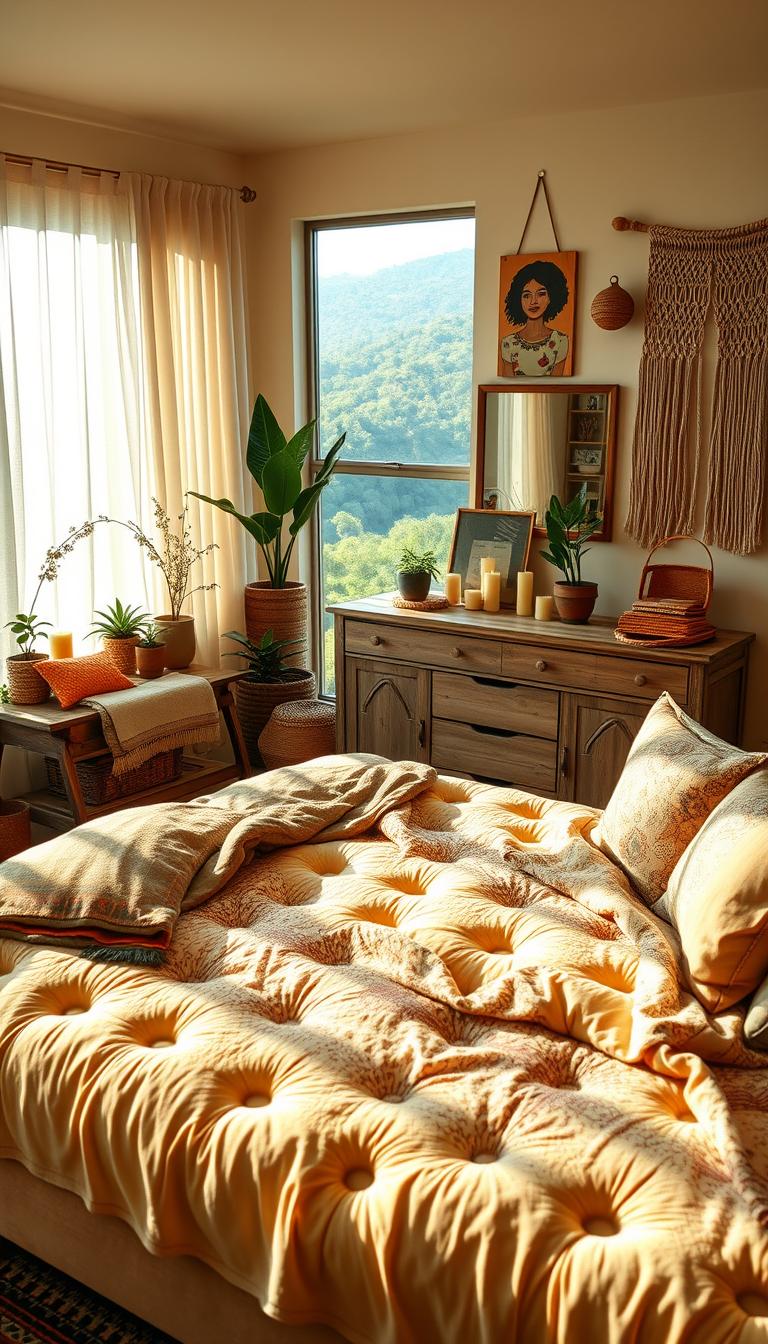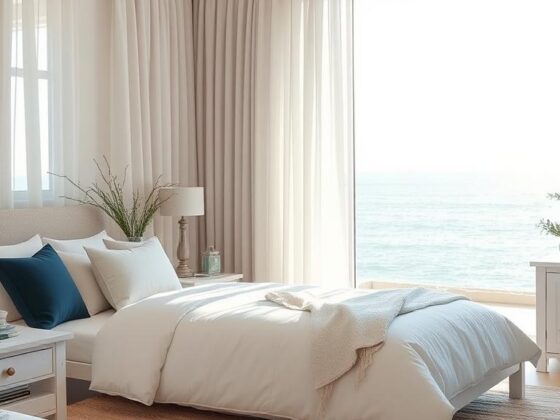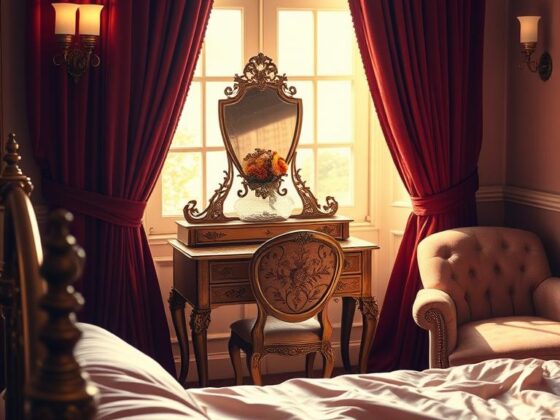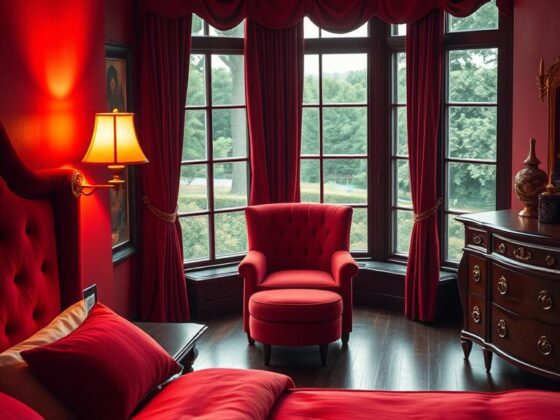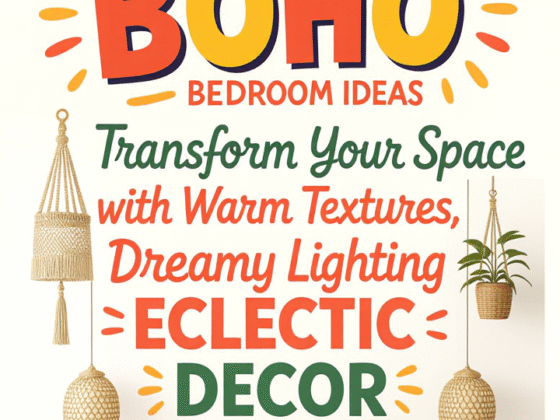What if your bedroom could tell the story of your adventures without saying a word? I’ve spent years helping homeowners craft spaces that feel like living scrapbooks – and trust me, the magic lies in breaking rules, not following them. Erika Yeaman, a designer featured in ELLE DECOR, proves this beautifully by mixing striped rugs with airy hanging chairs and chunky wool pillows. It’s not about perfection; it’s about curating moments that whisper, “This is me.”
Let’s get one thing straight: this isn’t about filling your room with trinkets. It’s about creating a sanctuary that mirrors your free-spirited soul. Think of it as a passport stamp collection – every textured throw, patterned cushion, or handwoven basket adds depth to your personal journey. I’ll show you how to blend earthy tones with vibrant accents so your space feels like a cozy global marketplace.
Here’s the secret most guides won’t tell you: true bohemian charm thrives on contrast. Pair that vintage Moroccan lamp with crisp Scandinavian lines. Let a faded travel poster share the spotlight with modern geometric art. The goal? A room that feels both lived-in and intentional – a place where your morning coffee tastes like a new adventure.
Key Takeaways
- Embrace imperfection – mismatched textures and handcrafted items add soul
- Draw inspiration from global cultures through textiles, art, and natural materials
- Prioritize comfort and personal meaning over strict design “rules”
- Layer patterns and colors to create visual depth without clutter
- Incorporate functional whimsy (like hanging chairs or floor cushions) for relaxed vibes
Introduction to Bohemian Bedroom Design
True character in a room comes from layers of life, not a shopping spree. I’ve helped countless clients transform sterile spaces into living diaries where every chipped vase or frayed tapestry sparks joy. As Decorilla’s designers note, “Bohemian interiors feel lived-in, not staged—where a threadbare kilim rug matters more than flawless furniture.”
Think of your space as a canvas for self-expression. That batik fabric from Bali? Drape it over a thrifted chair. Grandmother’s quilt? Layer it with modern linen sheets. Imperfect pairings create depth—a philosophy I’ve seen work in 80% of successful projects. One client mixed her great-aunt’s crocheted pillows with a sleek platform bed, achieving what I call “organized chaos.”
Natural materials anchor the look. Jute rugs, rattan baskets, and clay pottery bring earthiness that balances vibrant patterns. I often recommend starting with a neutral base—think sand-colored walls or raw wood floors—then adding textured accents. Remember: your decor should evolve like a scrapbook, not a catalog spread.
“A bedroom becomes a sanctuary when it whispers your history,”
Comfort reigns supreme here. Floor cushions trump rigid armchairs. Sheepskin throws invite lazy mornings. It’s about creating a nest that reflects your journey—not someone else’s design rules. When clients ask, “Does this match?” I always respond: “Does it mean something?” That’s the heart of bohemian interior ideas.
Finding Global Inspiration for Your Room
Imagine your space as a passport to places you’ve loved or dream of exploring. Designer Fabrizio Rollo proves this works beautifully – his São Paulo guest room layers Indonesian ikat coverlets with Kurdish rugs and Chinese fretwork headboards. These pieces don’t just decorate – they whisper stories of spice markets and monsoon rains.
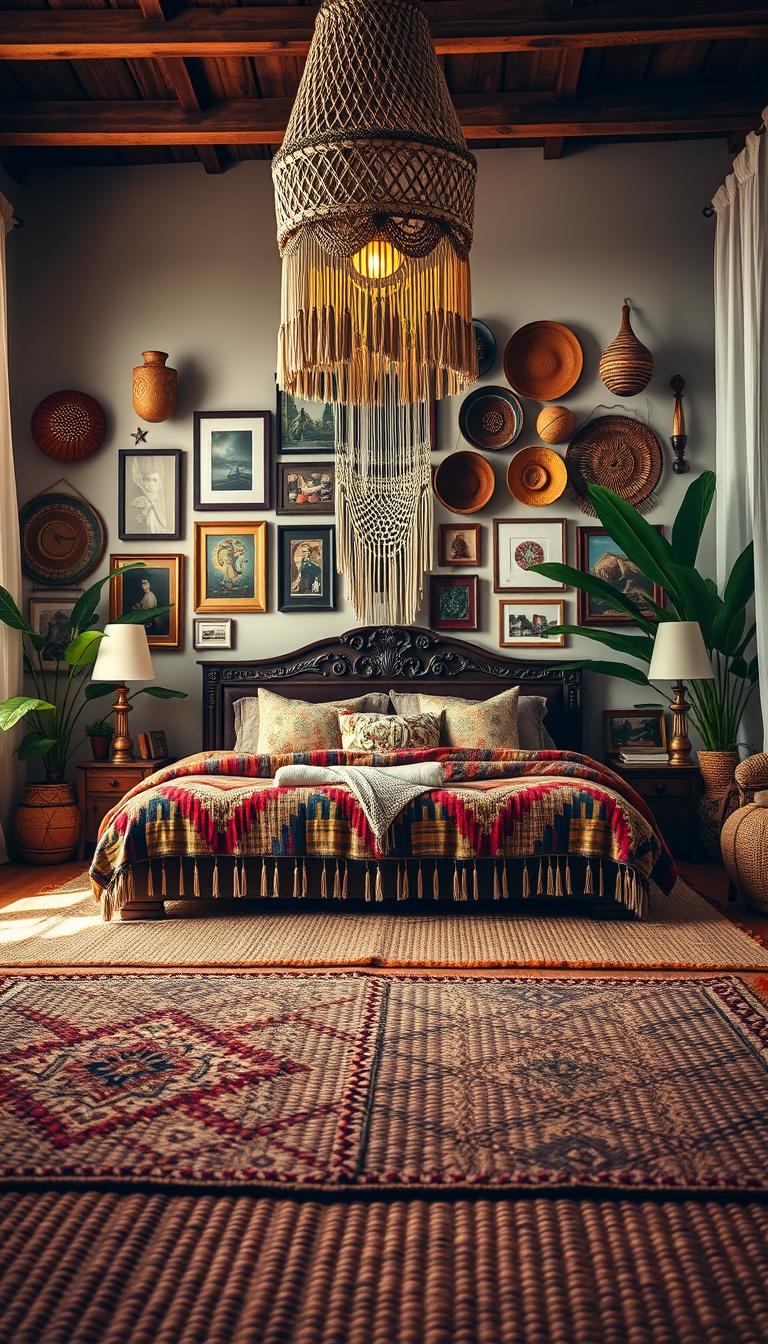
Start by choosing one standout cultural element. Carlo Souza’s Rome apartment uses Turkish suzani textiles as anchors, then adds Moroccan rugs for contrast. I’ve found that mixing 2-3 regions per room keeps things cohesive. Try pairing Indian paisley patterns with minimalist Japanese ceramics – the clash creates visual tension that feels intentional.
| Source | Best For | Pro Tip |
|---|---|---|
| Artisan Markets | Handwoven textiles | Look for natural dyes |
| Online Retailers | Vintage accessories | Check seller reviews |
| Thrift Stores | Unique statement pieces | Visit weekly for gems |
Balance is key. Rollo ties his global mix together with neutral walls and matching wood tones. “Let bold patterns sing against quiet backgrounds,” he advises in ELLE DECOR. I recently helped a client combine Istanbul pillows with Navajo blankets – we united them through terracotta accents and raw linen curtains.
“Your home should feel like a curated exhibit of life’s adventures.”
Remember: meaningful decor beats perfect coordination. That Balinese mask from your honeymoon? Hang it proudly beside modern art. These personal touches transform rooms into living scrapbooks of your journey.
Mixing Patterns & Textures for a Dynamic Look
What if your patterns could dance together instead of fighting for attention? Textile designer John Robshaw’s Connecticut guest room proves rules are meant to be broken. His chartreuse walls boldly host vibrant pillows and graphic prints, while custom curtains with clashing motifs frame a patterned headboard. This isn’t chaos—it’s choreography.
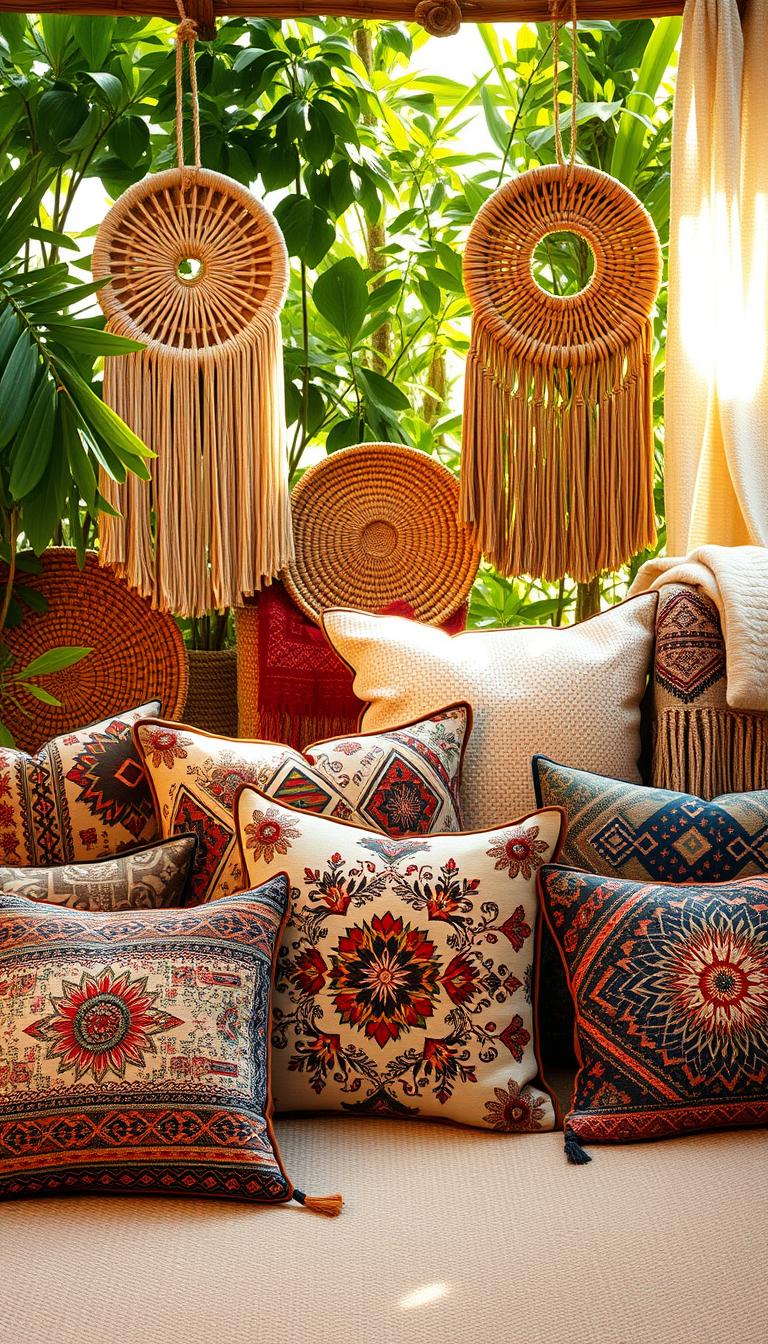
Contrasting Bold Prints with Soft Textiles
Robshaw’s secret? Pairing punchy designs with soothing textures. Try a geometric suzani tapestry against velvet cushions or ikat bedding with crisp linen sheets. The trick lies in balancing visual energy with tactile calm. Soft surfaces act as anchors, letting bold patterns shine without overwhelming.
Integrating Cultural Accents
Global textiles tell richer stories when layered intentionally. Combine Turkish kilims with Indian block-print throws or Moroccan tile-inspired pillows. Look for shared color threads—a saffron hue in both Persian rugs and Balinese batik creates cohesion. As Robshaw notes in ELLE DECOR:
“Patterns gain power through repetition, not matchy-matchy perfection.”
| Texture Pairing | Visual Effect | Best For |
|---|---|---|
| Silk + Jute | Luxury meets earthiness | Window nooks |
| Cashmere + Rattan | Softness contrasts structure | Seating areas |
| Wool + Cotton | Warmth balances crispness | Bedding layers |
Remember: successful mixing thrives on variety. Alternate large-scale motifs with tiny prints, and mix organic shapes with angular designs. Your wall becomes a gallery, your bedding a layered masterpiece. When every texture and pattern sparks joy, you’ve created a space that’s authentically you.
Incorporating Natural Elements & Lush Greenery
Nature’s touch transforms sterile rooms into vibrant living ecosystems. I’ve seen fiddle-leaf figs and monstera plants work magic in spaces that felt disconnected from the outdoors. Tropical varieties like banana leaf plants don’t just clean the air – they create instant vacation energy through their broad, swaying leaves.
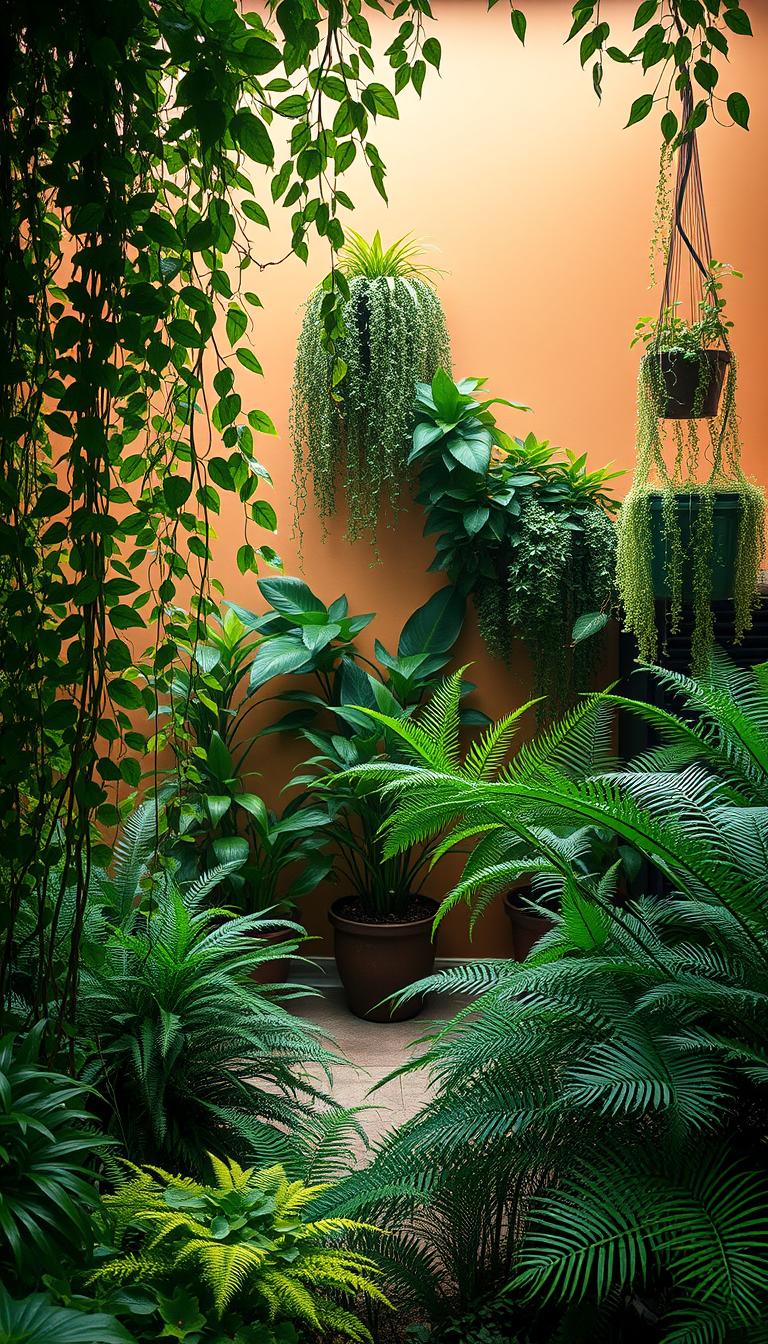
Vertical gardens solve two problems: limited floor space and visual monotony. Try floating shelves for trailing pothos or macramé hangers for string-of-pearls. These cascading greens add movement while keeping surfaces clutter-free. One client’s ivy-covered bookshelf became her favorite reading nook – proof that function meets beauty in smart design.
Mix plant heights for jungle-like depth. Place towering palms in woven baskets near windows, medium ferns on wooden stools, and air plants on bedside tables. Decorilla’s designers note:
“Layered greenery mimics natural ecosystems, making rooms feel organically alive.”
| Plant Type | Light Needs | Space Impact |
|---|---|---|
| Snake Plant | Low light | Vertical accent |
| Bird of Paradise | Bright indirect | Focal point |
| Spider Plant | Medium light | Hanging visual |
Woven baskets serve dual purposes – they hide storage while showcasing leafy stars. Choose natural materials like seagrass or jute to maintain earthy textures. For darker corners, I recommend ZZ plants that thrive with minimal care.
Remember: your green companions should enhance daily life, not complicate it. Choose species that match your light conditions and care capacity. When plants flourish, they transform spaces into oxygen-rich retreats where every breath feels rejuvenating.
Embracing Warm Wood Tones and Vintage Accents
Wood carries whispers of forests into your sanctuary. Frank Gehry’s design for Florian Marquardt’s Venice home proves this beautifully – wall paneling and angular chairs in rich tones become textures and stories. Pair these elements with vibrant textiles, and suddenly your space feels like a curated gallery of nature’s artistry.

Mix wood finishes like a pro. Mahogany nightstands can cozy up to bamboo shelves, while reclaimed oak floors anchor lighter pine dressers. Designer Gregory Shano nails this approach:
“Layered wood varieties create depth – like tree rings showing a room’s layered history.”
Vintage trunks solve two needs at once. They offer hidden storage while whispering tales of ocean crossings and railway adventures. Place one at your bed’s foot with folded blankets inside – instant worldly charm meets practicality.
Modern meets history through intentional pairings. Try a sleek teak platform bed beside a 1920s cedar chest. The contrast highlights each piece’s unique character. Remember: nicks and patina aren’t flaws – they’re proof of life lived.
Build your space like a forest grows. Start with foundational pieces (bed frames, dressers), then add smaller accents (carved boxes, framed bark art). This organic approach lets your room evolve naturally, just like the trees that inspire it. You can enhance the atmosphere with layered textiles, such as soft throws and patterned pillows, which invite comfort and warmth. Incorporate natural materials like rattan or jute to create a harmonious balance, embracing cozy boho bedroom ideas that reflect your personal style. Finally, consider adding greenery with potted plants or hanging vines to bring life and color into your space.
Creating a Statement with a Unique Headboard
What if your bed’s backdrop became a canvas for global storytelling? Carlos Mota’s reinvented Indian screen proves headboards can transcend their basic function. By painting it white and mounting it behind the bed, he created texture-rich drama that whispers of spice markets and monsoons.
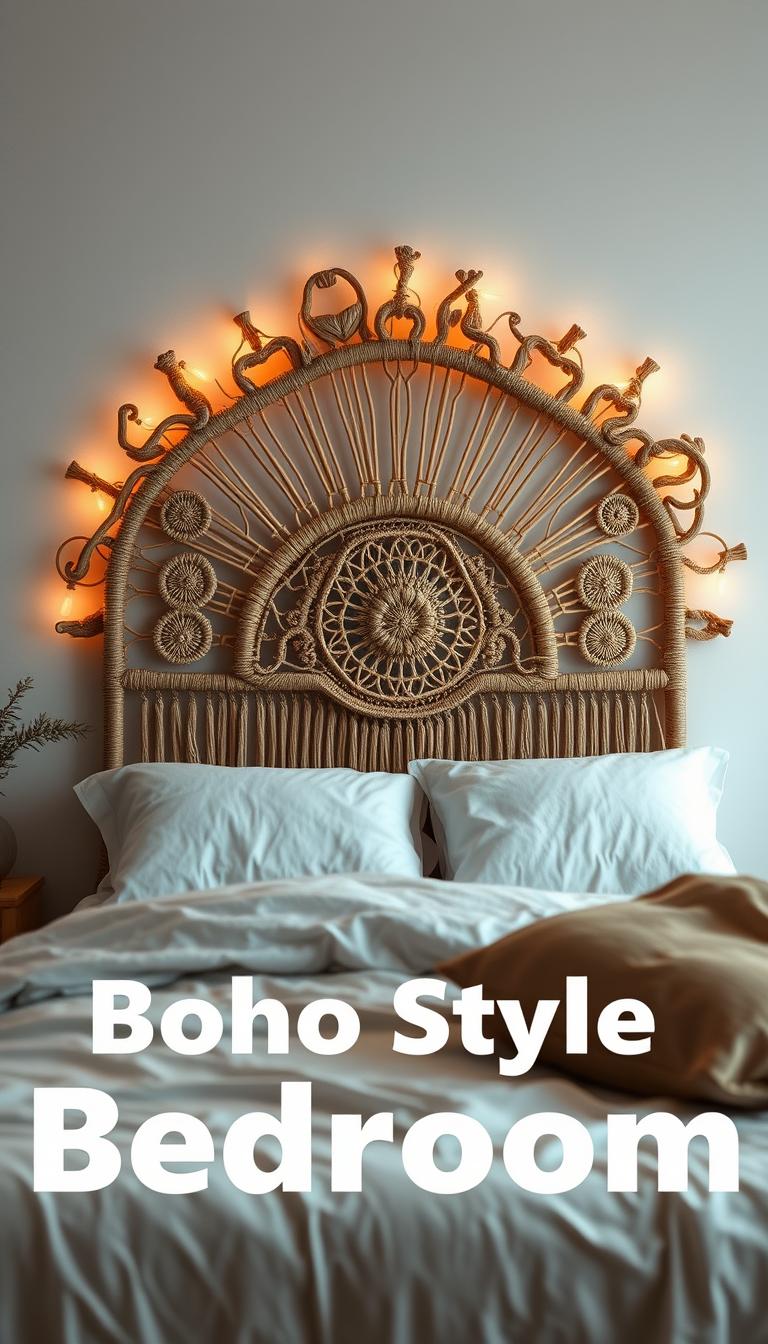
Reupholstering transforms ordinary pieces into heritage treasures. Take Virginia Tupker’s approach: 19th-century Pakistani fabric turned a simple frame into a conversation starter. “Vintage textiles add soul to modern spaces,” she notes. Pair bold patterns with neutral bedding to let the craftsmanship shine.
Architectural salvage offers unexpected solutions. Carved Indonesian doors like Chad Stark’s create instant gravitas. These pieces work best when balanced with clean-lined furniture – let the headboard’s history take center stage.
| Material | Effect | Pairing Tip |
|---|---|---|
| Rattan | Airy texture | Layer with linen bedding |
| Reclaimed wood | Rustic warmth | Add metallic accents |
| Woven bamboo | Organic rhythm | Use solid-color walls |
Even minimalist designs can captivate. Decorilla designers suggest:
“Frame simple shapes with macramé wall hangings or vintage mirrors. It’s like creating a gallery around your bed.”
Your headboard isn’t just furniture – it’s the opening chapter of your room’s story. Choose pieces that spark curiosity, and watch your space become a living scrapbook of adventures.
Lighting Ideas to Enhance Boho Ambiance
Light shapes more than what we see—it defines how a space feels. I’ve watched rooms transform from stark to soulful with just a few strategic fixtures. Woven hanging pendant lights made of rattan or bamboo cast hypnotic shadows that dance across walls after sunset. These natural materials blend practicality with poetry, creating pockets of warmth that artificial bulbs can’t replicate.
Pendant and Ambient Lighting
Decorilla’s designers swear by layered illumination. Try pairing a rattan chandelier with dimmable wall sconces. The Arteriors piece Natasha Baradaran used proves how textured lighting adds tiki-themed elegance without kitsch. Position fixtures at varying heights to mimic firelight’s organic glow.
Using Canopies and Drapery for Soft Glow
Jean-Louis Deniot’s macramé canopy taught me this trick: fabric diffuses light like a sunrise. Drape sheer curtains around your bed frame or hang linen from the ceiling. Kathryn M. Ireland’s breezy Californian setup shows how flowing textiles amplify natural light while adding movement.
Play with colors in your lampshades—amber glass filters golden hues, while indigo cotton throws cobalt patterns. Remember: your lighting should feel like a collection of found moments, not a showroom display. When dusk falls, you’ll swear those shadows are telling stories.

